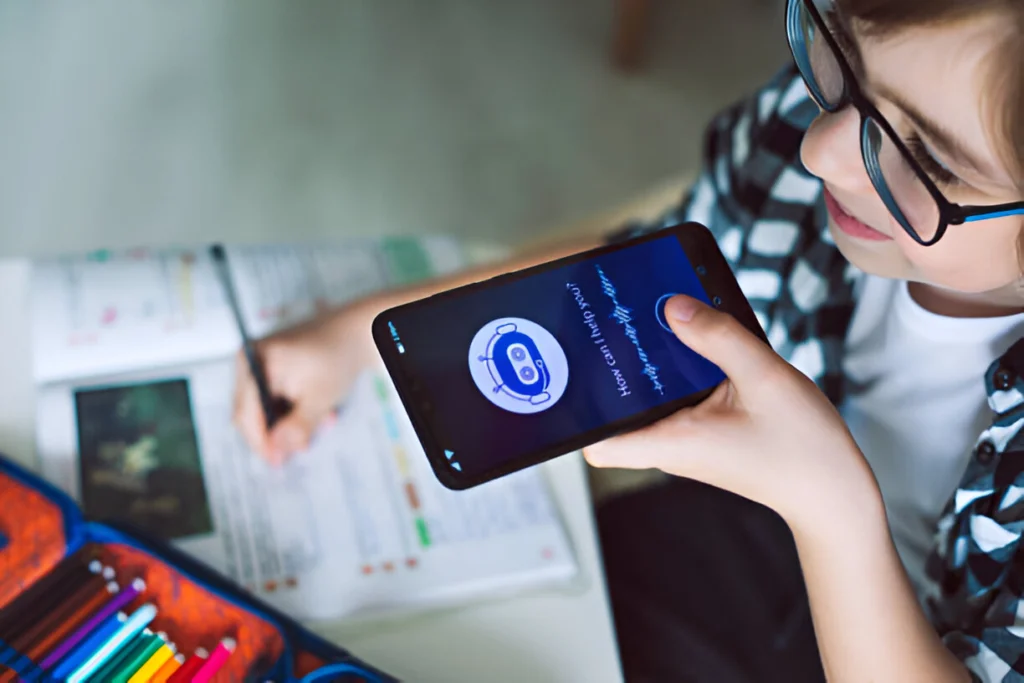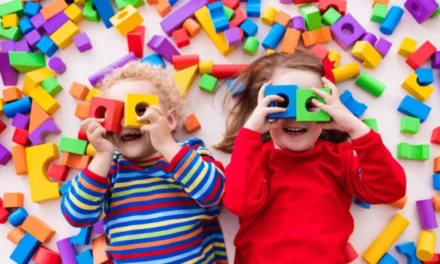Using technology in the classroom can make teaching easier and make learning more fun for students. It helps with communication and organizing lessons. You can also use it to make presentations more engaging with media and visuals. Technology for learning can make the classroom a richer place1.
Technology has changed the classroom, giving teachers many tools to improve learning. In this article, we’ll look at five ways to use technology well in your classroom. These methods can help students stay engaged, communicate better, and do well in school1.
Key Takeaways
- Incorporating multimedia and interactive elements can increase student engagement and improve learning outcomes.
- Digital simulations and models help students better understand complex concepts and processes.
- Technology enables seamless communication and collaboration between teachers, students, and parents.
- Cloud-based research tools and open educational resources make learning more accessible and personalized.
- Integrating technology supports self-paced learning and can lead to increased retention of new knowledge.
Gamifying the Learning Experience
Learning should be fun, and technology for gamified learning can make it so. Gamification adds game elements like points and badges to learning. This makes it more fun and engaging for students2.
Pear Practice is a great example of gamified learning. It helps K-12 teachers improve student teamwork. You can also create virtual scavenger hunts to make learning fun and collaborative2.
Gamification for learning boosts test scores and academic performance2. It also motivates students and improves teamwork2. Elements like leaderboards and rewards keep learners motivated2.
Gamified learning gives instant feedback, helping students stay on track2. It encourages teamwork and peer learning2. This approach helps retain knowledge and develop skills2.
Personalized gamification meets different learning styles and levels2. It uses data to improve teaching strategies2.
Evaluating the Impact of Gamified Learning
Measuring gamification’s success involves looking at data and feedback2. Regular updates are key to keeping it effective2.
Gamification in corporate settings has worked well, like at Payoneer2. But, it’s not always the same in schools3.
There are different ways to understand learners, like Bartle’s model and Yee’s model3. A new typology aims to better match gamified activities with learners’ needs3.
This typology helps personalize gamified systems for each learner3. The Activity-Centered Gamification Design (ACGD) focuses on meeting learners’ real needs3.
Incorporating gamification into education boosts motivation4. It offers quick feedback and encourages teamwork4. Educational platforms can tailor learning to each student’s needs4.
Despite its benefits, gamified education faces challenges like design issues and ensuring inclusivity4.
Leveraging Digital Simulations and Models

In today’s digital world, teachers have many tools to help students learn. Digital simulations and interactive models are especially powerful. They help students understand complex topics like science and math better5.
These tools let students see and play with abstract ideas. They can watch chemical reactions or learn about space. This makes learning fun and interactive5.
Enhancing Engagement and Understanding
Interactive models make learning even more exciting. They help students understand complex ideas better. Whether it’s the human body or economics, these models encourage students to get involved5.
Using digital tools also helps with teamwork and getting feedback right away. Students can learn at their own speed, making learning more personal56.
| Feature | Benefit |
|---|---|
| Digital Simulations | Visualize and interact with abstract concepts, bringing them to life in a dynamic, immersive manner. |
| Interactive Models | Develop a more intuitive understanding of complex processes and systems through visually engaging tools. |
| Collaborative Learning | Promote interaction and teamwork, fostering a more engaging and inclusive learning environment. |
| Real-time Feedback | Provide instant insights into student progress, allowing for personalized support and guidance. |
| Self-paced Exploration | Enable students to learn at their own pace, revisiting concepts and adjusting the learning experience based on their needs. |
Teachers can make learning better by using digital simulations and interactive models. This leads to deeper understanding and a more fun, team-based learning experience56.
Fostering Improved Communication

Technology can help students, teachers, and parents talk better. It makes learning more fun and interactive. By using social media and digital tools, you can make lessons more engaging7.
For example, you can start a Facebook group or use Twitter hashtags for your class. This lets students talk about lessons, ask questions, and work together on projects7. It helps them feel part of a community and improves how they communicate7.
Online tools like Google Docs and Slack help with teamwork and getting feedback quickly7. Students can get feedback from teachers and peers right away. This helps them learn better and understand subjects deeper7.
Using technology for communication helps students learn more and builds better relationships. It makes learning better, more fun, and supportive for everyone7.
| Communication Tool | Key Benefits |
|---|---|
| Facebook Group | Enables discussion of lessons and questions |
| Classroom Twitter Hashtags | Facilitates collaboration and sharing of ideas |
| Google Docs | Promotes real-time feedback and teamwork on assignments |
| Slack | Enhances group communication and discussion |
By using technology for communication, you can make learning more fun and collaborative. Students can help each other grow academically7.
Leveraging Digital Feedback Tools
There are many online tools for giving feedback to students7. Google Docs has tools for feedback, letting students discuss their work7.
Tools like Eduflow offer anonymous peer review. This helps give honest feedback without fear of negativity7. Floop helps students learn to use feedback to improve their work7.
Using these tools can make giving feedback easier and more personal. It helps students learn more and do better in school7.
“Effective communication is the foundation of successful collaboration, and technology can be a powerful enabler in this regard. By integrating digital tools and platforms into the classroom, you can foster a more engaged, interactive, and supportive learning environment for your students.”
Enhancing Research Capabilities
In today’s digital world, online research is a powerful tool for students. It lets them dive deep into their studies and learn more. With so many online resources, students can easily find information to help them grow academically.
Using digital resources makes research faster and easier. Students don’t have to search through books anymore8. Now, they can quickly find what they need thanks to cloud storage and advanced search tools. This saves time and lets them focus on understanding and analyzing the information.
Online research also lets students see different viewpoints and solutions from around the world. They’re not stuck with what’s in their local libraries or school databases8. They can explore a wide range of digital materials, from academic journals to blogs and videos, to get a full picture of their topics.
But, with so much information online, it’s key for students to learn how to use it wisely9. They need to know how to check if sources are trustworthy and how to organize and use the information they find9. By learning these skills, students can make sure their research is solid and meaningful, leading to better academic work.
In short, using digital resources has changed how students learn and grow. It offers faster research, access to worldwide views, and the chance to develop important skills. These tools help students succeed and grow in their studies.
Enabling Self-Paced Learning
Technology has changed how students learn. Now, they can learn at their own speed10. They can go back to topics they need more practice on, making learning fit their style.
Self-paced learning lets students control their learning. They can explore subjects they love or find hard, without rush10. This way, they learn at a pace that’s right for them, helping them grow.
Embracing Personalized Learning
Technology has made learning more personal10. Flipped classrooms and interactive videos help students learn at their own speed10. They can review lessons whenever they need to, until they get it.
Adaptive technology helps reduce test anxiety, a big problem for many students11. Learning at their own pace means less stress about time limits. They can focus on understanding the material, not just getting good grades.
Self-paced learning also helps schools by letting them teach more students11. It makes programs cheaper and more efficient. Plus, it adds social learning, like discussion boards, to keep students connected and learning from each other.
As technology gets better, so will self-paced learning11. With more microlearning, games, and feedback, students will stay interested and in charge of their learning.
Integrating Social Media
Social media is now a big part of students’ lives. It can make learning better when used in the classroom. Studies show that teachers have been slow to use it, but it’s really helpful12.
Platforms like Twitter, Instagram, and Facebook help with Online Collaboration and Classroom Community. They connect students, teachers, and parents in new ways. This makes learning more exciting and open to everyone12.
- Social media connects students with others worldwide12.
- It’s great for showing off student work and events12.
- Teachers can share articles to help students learn more12.
But using social media in class needs careful planning. Many adults see it as a distraction at first. Teachers must know how to use it well12. With clear rules, social media can help students learn and work together better.
| Advantages of Social Media Integration | Challenges of Social Media Integration |
|---|---|
|
|
By using Social Media Integration, teachers can make the classroom more lively. This prepares students for a world that uses technology and teamwork13.
“The best way for students to understand responsible social media use is through experiential learning guided by knowledgeable teachers.”12
Using social media in class needs careful planning and following rules12. With the right approach, teachers can make learning better and more fun for everyone.
Creating Digital Content
Encouraging students to make digital content like videos, podcasts, or blogs boosts their creativity and critical thinking. It helps them understand subjects better14. This method lets students show their talents and how they like to communicate, fitting different learning styles14.
Offering various digital mediums for content creation unlocks students’ potential for Digital Content Creation and Multimedia Projects14. It promotes Engaged Learning and teaches important life skills like communication and critical thinking. It also deepens their subject matter understanding1415.
Fostering Creativity and Engagement
When students create digital content, they become more engaged and invested in their learning14. This hands-on method lets them display their unique talents and learning styles. It makes learning more personal and meaningful1415.
Encouraging blogs, videos, podcasts, or other digital content inspires critical thinking and problem-solving. It also lets students express themselves creatively1415. This improves their subject understanding and prepares them with valuable Digital Content Creation and Multimedia Projects skills for the future14.
“Technology caters to different learning styles and allows students to work at their own pace.”14
Creating digital content empowers students to take charge of their learning. It builds their confidence and sense of accomplishment in their work1415. By adopting this method, you can unleash your students’ full potential and create a vibrant, Engaged Learning environment14.
Technology for Learning
Using Classroom Technology and Educational Technology can open up new ways to teach. It lets you create a learning space that’s engaging and personal. With the right Learning Tools, students can communicate better, learn at their own pace, and enjoy their studies more.
Technology helps students, teachers, and parents talk easily16. This makes learning a team effort. It also gives students a chance to explore lots of digital resources, making their studies richer17.
Technology lets students be more involved in their learning. By adding fun elements like games and leaderboards, you can make studying fun16. Tools like augmented reality can also help students grasp tough subjects like science and math better16.
When using Classroom Technology and Educational Technology, focus on teaching digital skills. Students need to learn how to use these tools well. This ensures they get the most out of technology in their studies17.
With the right Learning Tools, you can make learning exciting and empowering for your students. Technology can change the way we teach and learn. Let’s use it to make education better for everyone18.
Utilizing Online Collaboration Tools
In today’s world, online collaboration tools are key for teamwork and learning online. Online Collaboration platforms like Google Docs and Slack change how students and teachers work together19.
These tools make teamwork better by allowing easy communication and file sharing. Students can work on projects and assignments together smoothly20.
Online tools also help create a learning community in the classroom. Teachers can assign tasks and give feedback easily. Students can ask questions and share ideas with each other20.
Using these tools helps students learn important skills for the future. They learn to communicate, solve problems, and think critically. These skills are vital for both school and work19.
“Technology has the power to transform education, and online collaboration tools are at the forefront of this transformation. By harnessing the potential of these platforms, we can create more engaging, interactive, and enriching learning experiences for our students.”
Evaluating the Effectiveness of Customized Online Collaboration Tools
Studies show that customized online tools can improve learning20. One study found that a special platform was seen as very effective for learning. But, it also found some design issues that needed fixing20.
It’s important for teachers to check how well these tools work. They need to make sure they meet the needs of students and teachers20.
By keeping up with new research, teachers can use online tools to make learning exciting. This prepares students for the digital world of today20.
Fostering Collaborative Learning through Technology
Technology helps make group work better and improves learning21. For example, tools like Pear Deck Flashcard Factory help students work together better. They can take turns and do different tasks21.
Color-coded tools, like Wixie and Book Creator, help students work together too. They have their own digital space and role. This helps them learn to work together and think critically21.
By using these tools, teachers can make learning fun and engaging. Students learn important skills for the digital world211920.
Implementing Classroom Calendars
In today’s digital world, a shared classroom calendar is a great tool for22 managing time and keeping things organized. You can use Google Calendar or similar tools to share updates, assignment due dates, and events23. This makes it easy for teachers and students to stay informed.
Having a shared calendar23 brings many benefits to your classroom. It helps you share important information and keeps everyone in sync22. You can use it to teach math skills like numbers and money, as well as life skills like recognizing months and birthdays.
A classroom calendar is also great for22 boosting student engagement and22 teaching social-emotional skills. You can make calendar time fun with interactive activities22. Tools like Calendar Math for Google Slides and PowerPoint22 make learning math and life skills fun and flexible.
By setting up a shared classroom calendar, you can make your classroom run smoother23. It helps with22 time management and creates a more22 structured and fun learning space for your students23.
Analyzing Web Resources
In today’s world, it’s key to teach students how to check online sources. This skill is vital for digital literacy. By teaching them to analyze web resources and think critically, you prepare them for the internet’s vast information.
Developing Standards for Reliable Sources
Begin by reviewing websites with your students. Create standards to judge if a site is trustworthy. Talk about the author’s background, the info’s freshness, and if it’s well-sourced24.
- Check if the author knows what they’re talking about.
- Make sure the info is up-to-date and relevant.
- Look for sources to back up the claims.
- Be wary of sites that seem biased or unclear.
By teaching these steps, you help students learn to evaluate online sources well24.
Applying Digital Literacy Strategies
After learning how to judge websites, encourage students to use these skills often. Tell them to check facts from different places and be cautious of unproven claims25.
“The ability to critically evaluate online resources is a crucial skill in the digital age, as it empowers students to navigate the vast and often overwhelming sea of information available on the internet.”
By promoting digital literacy and critical thinking, you make your students better at finding reliable online info. This helps them avoid false or misleading content2526.,
Incorporating Multimedia Presentations
Make your lessons more engaging by adding multimedia learning to your presentations. Use visual aids like photos, videos, and interactive media. This makes your lessons fun and interesting for your students.
Studies show that educational videos can really help students learn. Brame (2016)27 found that they can make learning more effective. Also, breaking down content into smaller chunks helps students remember it better, as Cowan (2014)27 discovered.
It’s important to keep students engaged with videos. Young et al. (2018)27 found that interest can drop after 6 minutes. Make sure your videos are easy to understand and accessible for everyone.
When creating multimedia slides, follow the 5×5 rule. This means each bullet point should have no more than 5 words. Also, when using multimedia presentations in person, always face your audience to keep them engaged27.
There are many tools out there to help you create great multimedia presentations. Check out Adobe Premiere Pro, Adobe Spark, Sway, and Office 365 PowerPoint. Zoom is also great for videoconferencing and recording27. Mayer (2014) says it’s key to use research-based principles when making multimedia instruction27. Adding interactive content can also make learning more active28.
Multimedia presentations can really help students feel more confident in their language skills. They can practice speaking without feeling too much pressure28. Digital presentations also let teachers give feedback that can really help students learn28. Tools like Canva use AI to make creating presentations easier and faster28.
Writing scripts for multimedia presentations can improve ELA skills and teach students to be more information literate28. These presentations encourage students to think creatively and share their ideas in new ways28. Letting students choose how to present their work can help them show off their knowledge and skills28.
Getting quality education is still a big problem in many countries29. Multimedia technology can help solve this by making education more accessible and improving learning outcomes29. These tools include not just text and images but also audio, video, animation, and 3-D29.
Multimedia technology makes learning more engaging by combining different types of content29. There are many educational apps out there, covering subjects like Math, Social Sciences, and more29. To be effective, these apps need to be high-quality and mimic the way a teacher would teach29.
Studies have shown that using pictures and words together in digital learning can be more effective than just words alone29. The benefits of multimedia application tools include making complex ideas simple, presenting lots of information quickly, and keeping students interested292728.
Providing Online Enrichment Activities
In today’s world, technology gives teachers many ways to make learning better for students. One great idea is to offer online enrichment activities for students who finish their work early. These activities let them explore topics they find interesting and learn more at their own speed.
Fostering Self-Directed Exploration
Setting up online learning stations or activity hubs can help students learn on their own. For instance, you can guide them to sites like30 Khan Academy or30 Prodigy. These places have lots of classes and math games for students to enjoy.
You can also use sites like30 Scholastic Learn at Home or30 StudiesWeekly.com. These offer learning in different subjects. This way, you can help students grow their curiosity and learn important skills.
Using31 student-led projects and31 science fairs can make learning more fun and meaningful. Encouraging students to try31 community service or31 language clubs can also broaden their experiences and teach them valuable skills.
By offering these online enrichment activities, you empower your students to take control of their learning. This can improve their grades, make them more engaged, and help them develop skills needed for today’s world.
Addressing Different Learning Styles
Technology has changed how students learn, meeting their different learning styles. Visual learners love images, diagrams, and videos. Auditory learners enjoy voice-recorded stories and podcasts. The digital world offers many ways to make learning personal32.
Kinesthetic learners do well with hands-on activities. They like interactive simulations and games. Tools like PHeT Interactive Simulations and Hakitzu: Code of the Warrior make learning fun and hands-on32.
Technology also helps teachers tailor lessons for each student. This means adjusting content, process, and learning environment. By using digital tools, teachers can make learning fair, efficient, and engaging for everyone33.
“The approach to integrating technology in education should aim to accomplish the ‘4Es’ criteria: Equitable, Efficient, Effective, and Engaging learning experiences.”33
Teachers must focus on learning goals when using technology. They should make sure digital tools meet students’ needs. They also need to think about possible challenges and side effects33.
By using technology wisely, teachers can create a learning space that works for everyone. This approach helps students of all learning styles succeed and grow together32.
Conclusion
Technology is changing fast and is now a big part of our lives. It plays a key role in education, making learning fun and effective34. It helps students learn through games and simulations, and it makes research easier35. Today, students see technology as key to their success, and schools must provide the tools they need.
Studies show that technology can really help students do well, especially when used right3436. It lets students learn at their own pace and use social media to connect. It also helps them make digital content, making learning exciting3536. Technology can also help students who face challenges, making sure everyone has a chance to learn.
Looking ahead, technology will keep being important for getting ready for the future job market and college36. By using technology wisely, teachers can help students think critically, communicate well, and solve problems. This will prepare them for the changing world we live in.






Trackbacks/Pingbacks